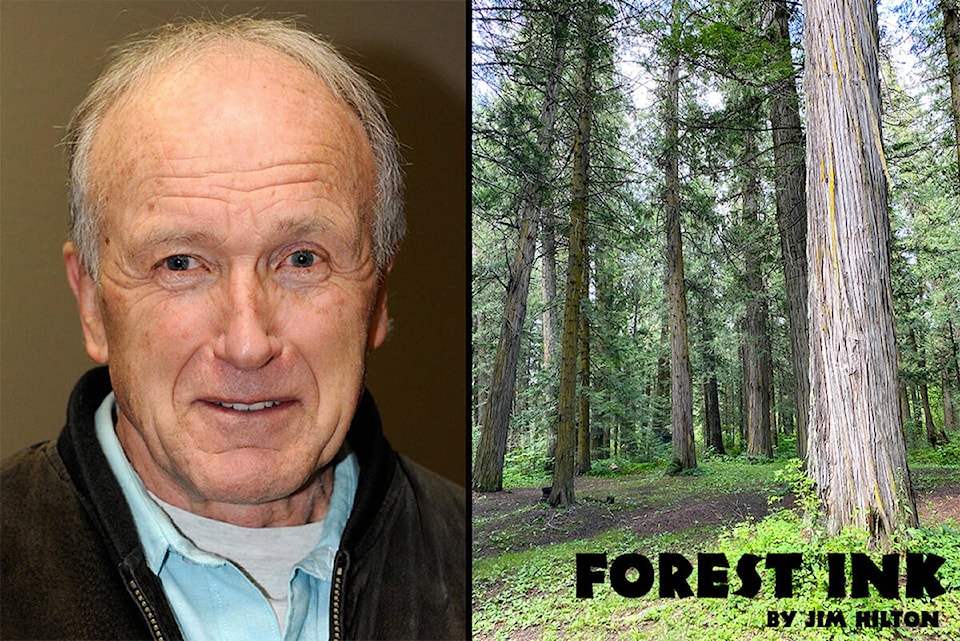Jim HILTON
Special to Tribune
I started writing Tribune articles in 2014 about ways to transition from burning logging residual materials into other products like biochar, branch wood chips or biofuels.
Unfortunately the fire guard work being done along the West Branch Road in the Chilcotin is creating residual log piles that are going to be burnt on site.
According to Mike Tomlinson, forestry manager for the Eniyud Community Forest (ECF) it is the eight-hour round trip to the Williams Lake pellet and bioenergy plants that still makes it uneconomical to chip and transport them to town. I am presently working on an article about ways that the recent log profits have been and could be used to support community projects for the two partners of the ECF.
There are a number of ways to initiate a project including offering a scholarship or bursary that is tied to a specific project in the community.
The other way is to write up a request for a proposal that would outline the best way to initiate and carryout a more long-term self-supporting project. I think most residents would agree that one of the main goals of the ECF was to improve forestry practices along with providing jobs for locals hope fully long term employment.
Once the forest residuals are turned into smoke there is no way to get it back so the sooner we start working on other options the closer we get to making long term positive changes. We are fortunate to have local TRU and UBC institutions that could provide mentoring of students involved with projects.
There are also some consulting firms that have expertise for a wide variety of potential projects.
I have done some experimenting on my property producing biochar from fir tree branches and small stems using metal drums or moderate burn piles.
If the burn pile is extinguished at the right time (small piles don’t take much water or snow) a significant amount of biochar can be produced and left on site until it is convenient to move and store it. I use a leaf blower to keep the smoke levels down and have also managed to recover a few barrels of biochar from some old burn piles near my home.
I have also been doing some experimenting with adding biochar to some of my garden plants and along with shrubs and trees that I am introducing. Some experimenting is also being done on using biochar for improving the efficiency of adding fertilizers to increase forest growth.
I will be the first to admit that what I am proposing is more work that simply burning the piles at the road side but nothing is going to change unless we at least start with some small scale experiments to see what is involved with trying to utilize these residual log piles.
I have written lots of articles about producing biochar throughout the USA and eastern Canada. Using air current burners is also well documented for producing useable end products as well as reducing smoke and meeting environmental requirements. While these methods are more desirable I am suggesting that we can start by controlled burning piles which is more economical but not as good at recovering the desired end products. Let’s at least try some small experiments and see what we can learn.
READ MORE: FOREST INK: Ice highways can be critical for northern transportation
Don’t miss out on reading the latest local, provincial and national news offered at the Williams LakeTribune. Sign up for our free newsletter here.
